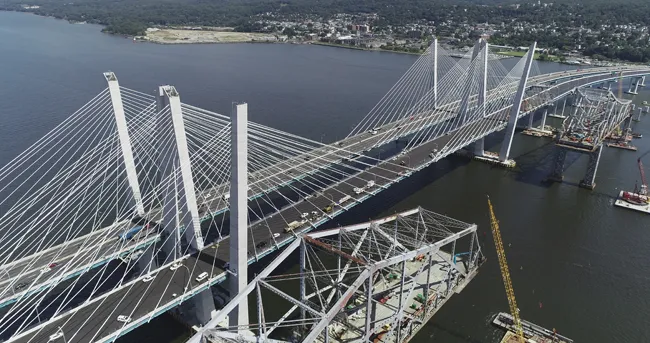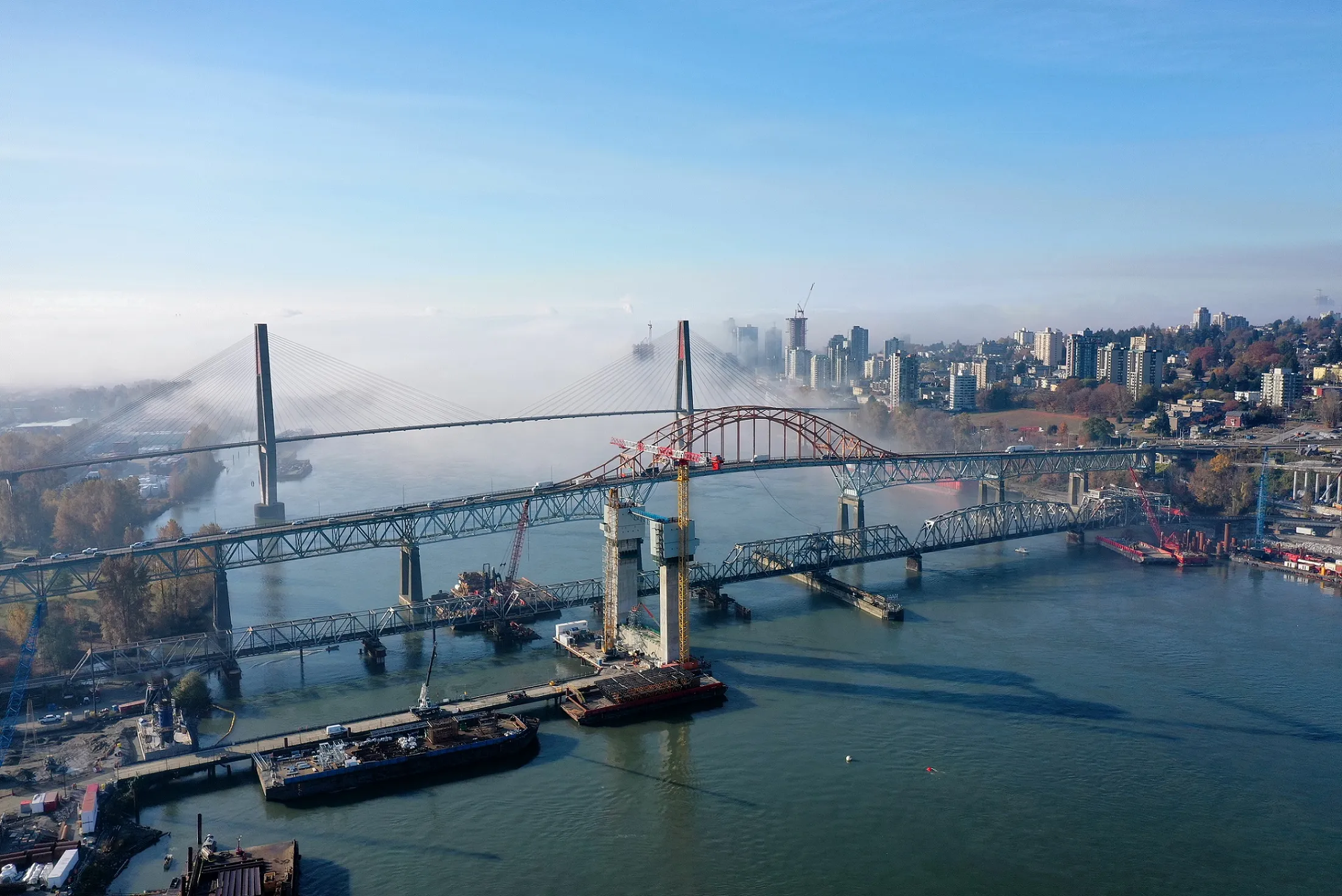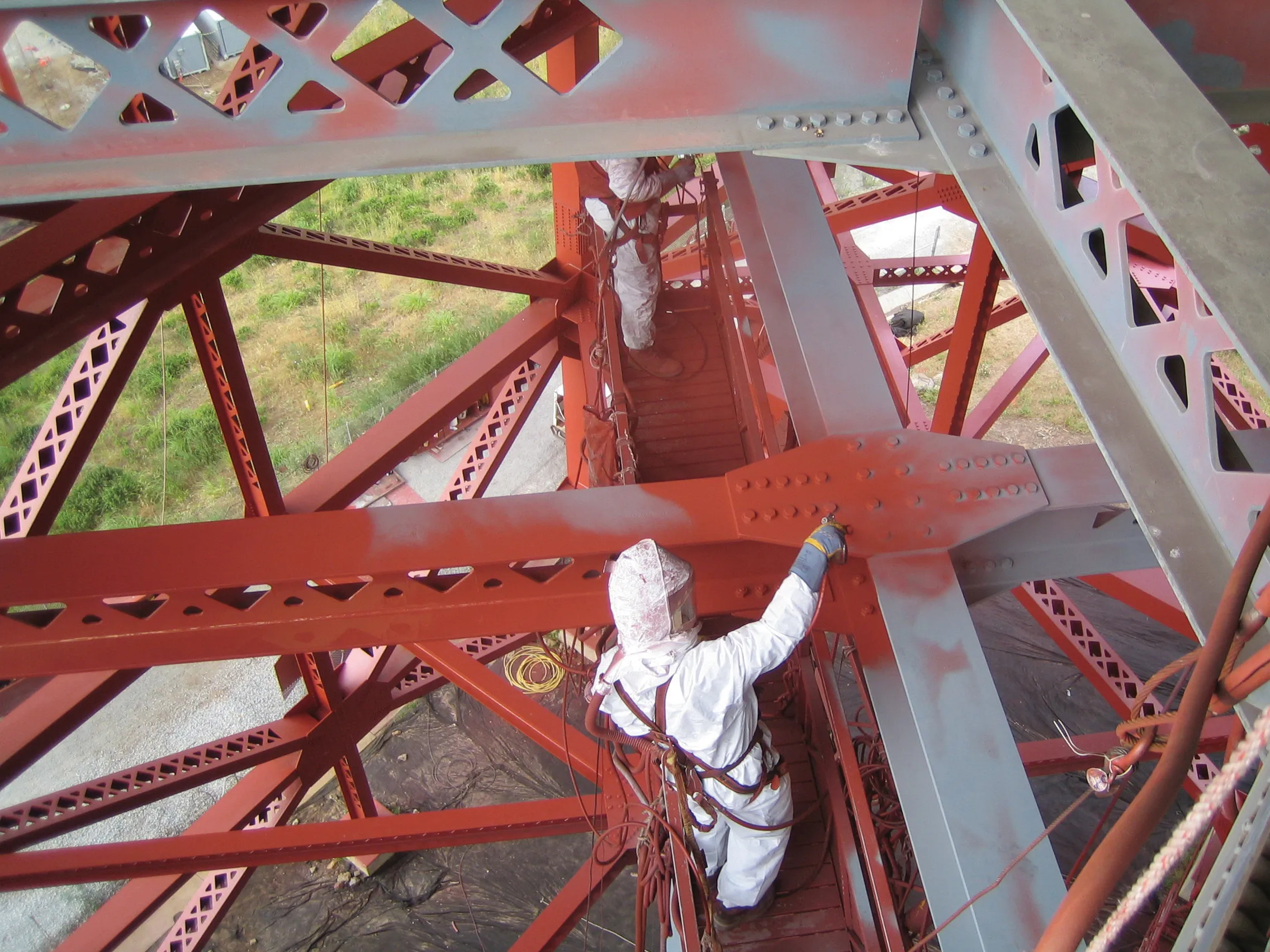The second span of the New York’s new cable-stayed bridge has now been completed and has opened to traffic. The final span of the Governor Mario M Cuomo Bridge, which replaced the Tappan Zee Bridge, has now been opened to drivers. The opening was delayed slightly due to concerns over the state of a section of the old bridge, now being demolished. The new link was constructed by a joint venture headed by
6343 Fluor. With the new bridge opening, all four lanes of eastbound traffic shifted to the new second span. The eastbound span consists of four general purpose traffic lanes, two emergency shoulders, space for a dedicated bus lane and an advanced traffic monitoring system.
The westbound bridge will remain in a temporary configuration while crews complete the bridge’s shared-use path connecting Westchester (New York) and Rockland (New York) counties for pedestrians and cyclists.
The New York State Thruway Authority, in partnership with the Fluor-led joint venture of Tappan Zee Constructors, LLC – comprised of 1021 American Bridge Company, Granite Construction Northeast, Inc. and Taylor Bros., Inc. – replaced the old bridge with a new 5km state-of-the-art, twin-span, cable-stayed bridge crossing the Hudson River between Westchester and Rockland counties. The cable-stayed main span is supported by eight 128m towers, which stand at 5° angles and feature a sleek, chamfered design. The iconic towers support 192 stay cables, which are made up of roughly 7,840km of steel strands.
The Governor Mario M Cuomo Bridge is one of the largest single design-build contracts for a transportation project in the United States and is the largest bridge project in New York state history.









